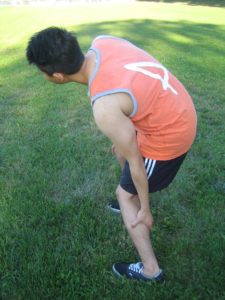A calf muscle cramp involves involuntary contraction of the muscles. This is not only very sore but can also trigger damage of the muscles in severe cases.
Close look on leg cramps
Leg cramps can be described as painful contractions of the muscles that occur involuntarily or intentionally. A cramp typically affects those who train excessively, especially runners at some point in their career. The usual site for cramps to occur include the calf muscles which includes the gastrocnemius and soleus muscle.
What are the possible causes?

Even though the exact cause of a calf muscle cramp has not yet been determined successfully, the possible causes include:
- Dehydration – this occurs by not drinking enough water, especially in warm conditions
- Low level of potassium or sodium – when sweating, salts are lost which should be replaced.
- Low carbohydrate level – carbohydrate is the major source of energy for the muscles
- Tight muscles – having tight muscles have contracted and squeezed blood out, thus there is limited blood and nutrients in the muscle
Management for a calf muscle cramp
If an individual is experiencing a calf muscle cramp, it is recommended to stretch the muscles involved and hold if possible. Massage the calf muscles in a gentle manner to alleviate the symptoms to promote improved blood flow.
A sports therapist might utilize sports massage techniques to improve the condition of the affected muscle to allow the knotted areas to relax. Stretching and strengthening exercises are recommended to prevent future episodes of cramping as well as determine if dehydration, insufficient diet or lack of salt might be a possible cause.
The reason might be lack of salt in the diet but there is already excess salt in processed foods in which it is no longer a possible cause of a calf muscle cramp.
Is sports massage beneficial?
It is important to note that massage is beneficial in alleviating a calf muscle cramp. It works by stimulating the blood flow as well as helping stretch out the muscle. Massage is also effective in the days and weeks after the cramps as well as prevention.
More Information / Disclaimer
The information posted on this page on a calf muscle cramp is for learning purposes only. Learn to recognize and manage muscle injuries and conditions by taking a standard first aid course with Saskatoon First Aid.
